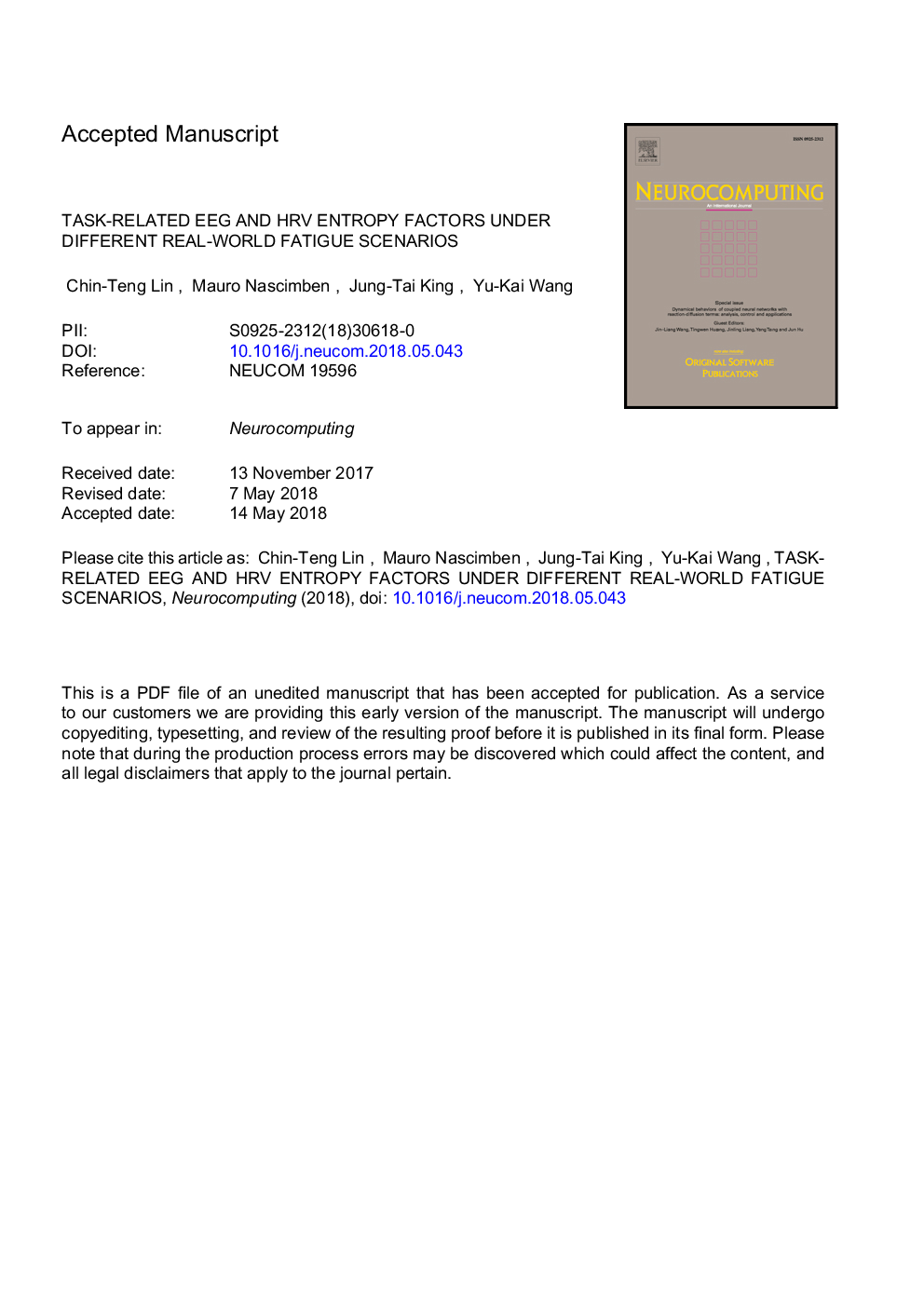| Article ID | Journal | Published Year | Pages | File Type |
|---|---|---|---|---|
| 6863587 | Neurocomputing | 2018 | 19 Pages |
Abstract
We classified the alertness levels of 17 subjects in different experimental sessions in a six-month longitudinal study based on a daily sampling system and related alertness to performance on a psychomotor vigilance task (PVT). As to our best knowledge, this is the first EEG-based longitudinal study for real-world fatigue. Alertness and PVT performance showed a monotonically increasing relationship. Moreover, we identified two measures in the entropy domain from electroencephalography (EEG) and heart rate variability (HRV) signals that were able to identify the extreme classes of PVT performers. Wiener entropy on selected leads from the frontal-parietal axis was able to discriminate the group of best performers. Sample entropy from the HRV signal was able to identify the worst performers. This joint EEG-HRV quantification provides complementary indexes to indicate more reliable human performance.
Related Topics
Physical Sciences and Engineering
Computer Science
Artificial Intelligence
Authors
Chin-Teng Lin, Mauro Nascimben, Jung-Tai King, Yu-Kai Wang,
